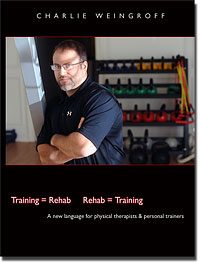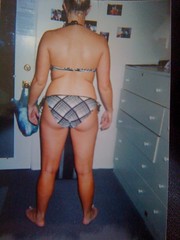This past weekend, along wirh EC, I ventured to Providence, RI for the Perform Better Summit. Having missed it last year for the first time since 2007, I was undoubtedly pumped to have the oppotunity to meet up with old colleagues whom I hadn’t seen in a while to, you know, break bread, eat lots of dead animal flesh, maybe arm wrestle, exchange ideas, talk some shop, and most important of all, listen to Alwyn Cosgrove swear like a sailor.
Oh, and of course there was some learning to do.
While I wasn’t able to make it on Friday for the start of the Summit (thank you entrepreneurship), both Eric and I drove in early Saturday afternoon so that we could spend both Saturday and Sunday getting our learn on.
With close to 950 participants attending, this was probably the biggest event Perform Better has ever hosted. It was great to have the opportunity to talk to people who read my blog and articles, and I can’t thank everyone enough for all the kind words. Really. I know I joke about it all the time, but it’s really cool knowing that there are people out there who don’t feel I suck. And if you do, that’s fine too. I can take it. I just won’t send you a Christmas card.
Seriously, though, for all those people who came up to me and introduced themselves, again, thank you.
More to the point, as awesome as the lineup of presenters were – what was equally as impressive was the quality of attendees.
I bumped into Lou Schuler. Actually he approached me! Lou freakin Schuler initiated a conversation with me! Granted I’ve met Lou in the past, but still. It’s cool as shit. Additionally, I finally had the opportunity to meet Nick Tumminello in person. Great guy, and I’m not kidding when I say he’s constantly thinking of new ideas. The guy is just “on” all the time. Likewise, I bumped into Kevin Neeld, BJ Baker, Dave Jack, Dewey Nielsen, Anthony Renna, Joe Dowdell, and a host of other people in the biz that I admire and respect.
Nevertheless it was a fantastic time, and I can’t stress enough how much of an idiot you are if you’re a fitness professional and you have yet to attend one of these events. Seriously.
That said, while I had every intention of writing up a complete summary of the presentations I saw, I decided to focus on one.
Todd Durkin: Creating Maximum I.M.P.A.C.T in the Fitness Field
For those not familiar with him, Todd is a strength coached based out of San Diego and is arguably the most energetic person this side of the Energizer Bunny. The man is a machine, and it’s no wonder why he runs one of the most successful training facilities in the country; and why numerous NFL, MLB, and various other professional athletes flock to him every off-season.
Todd’s presentation wasn’t so mucn about the perfect program, how many sets and reps to do, which exercise to do in what order, or had anything to do with some unknown Eastern European quasi-isometric, undulated system that would get you results 158% faster.
Instead, his presentation was all about how to step-up your game as a coach. We don’t realize this, but as fitness professionals, we’re often the highlight of client’s days, if not week. For many trainees, they sit at work all day, filling out their TPS reports, hating life, and more often than not, their time in the gym is their only time to “get away.”
How much would it suck if they arrived and you’re just being a Jonny Raincloud and there’s no energy behind their session? You just take them through the motions (or worse, the Cybex circuit), and there’s no spirit or purpose to their workout, all the while checking your messages on your phone and just being overly disinterested. In short: you suck.
As coaches and trainers, we need to make a concerted effort to be on our “A” game………always. We owe that to our clients. Now, I’m not saying I’m perfect. I certainly have days where I feel less than stellar, and would rather jump into a shark’s mouth than teach little Danny Snowflake how to Goblet squat – but thankfully, those days are few and far between.
Even still, while I can look myself in the mirror and say that I love my job and that I’m passionate about what I do on a daily basis, after listening and watching Todd, I recognize that I can step up my game to a degree.
As can you, I’m sure.
One nugget that hit me like a ton of bricks was something that Todd refered to as the $25,000 piece of advice. Basically Todd told the story of how, back in the day, JP Morgan was approached by some gentleman who propositioned him with the following:
[Cue 19th Century British voice – I have no idea of the guy was British, but for the sake of argument, lets say he was]
“Good day kind sir. If you would be so inclined, may I bother you for a spot? In no uncertain terms, I am quite sure that if you heed my advice that I hold here in my hand – you sir, will be more successful than you could ever imagine.
The only caveat, if I may be so humbly bequeathed? If you like my advice, you shall pay me $25,000. Hfff hfff hfff hfff hfff.”
Being a man of his word, JP Morgan assured the stranger that if he in fact did find the piece of advice valuable, he’d pay the man right then and there.
After reading the piece of paper, indeed, JP paid up. What did it say? Two things:
1. Write down FIVE things you need to do today.
2. Do them.
That’s some Jedi mind s**t right there. Think about it. How often do you say you’re going to do something, only to put it off because you ended up updated your Facebook status for the 37th time, or decided it was more important to watch the season finale fo American Idol instead?
Think about how much more organized and productive you’d be if you just sat down for 5-10 minutes every day, wrote down the five most important things you NEED to get done, and then, you know, did them!
I don’t know about you, but I couldn’t believe how something so simple and subtle could seemingly be so profound.
So, here’s the deal: try it! Starting today, I want you grab a piece of paper and write down five things you need to do. I don’t care what they are. It could be something as simple as “pick up milk at the store,” to something more specific and goal oriented like “not skipping the gym today.” Heck, it could be something like taking the time to call your mother; or, maybe buying some flowers for your girlfriend on your way to pick her up at the airport.
Note to Self: pick up flowers for Lisa before heading out to pick her up at the airport today.
The point is, writing them down on a piece of paper makes it real – makes it more concrete. Even more important, it holds you more accountable. Using myself as an example, here’s my list for today:
1. Pick up flowers for Lisa before heading out to pick her up at the airport today. Seriously dude, don’t forget.
2. Write all Cressey Performance related programs that are due for today – three, in all.
3. Write the “body” of my next Livestrong.com article. SPOILER ALERT: it’s going to be titled, Your Shoulder Hurts? Here’s Why.
4. Buy a new pair of Rehbands. The one’s I have now (which are 3-4 years old, mind you) are starting to smell like eggs boiled in the bath water of a prostitute.
5. Lift heavy things. Which, I need to go do now.
So, what are YOU going to do today. Lets hear it!











